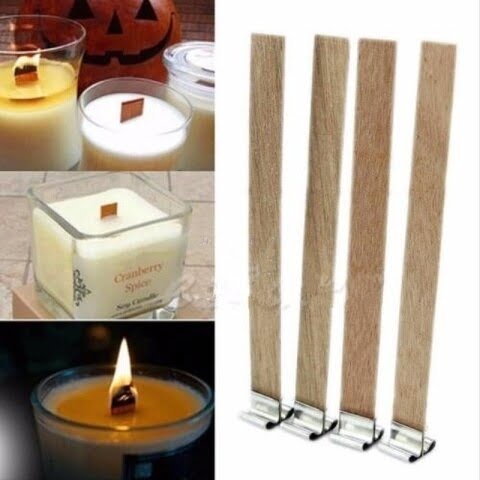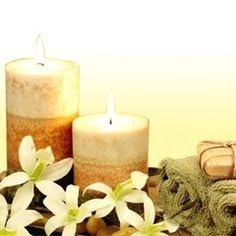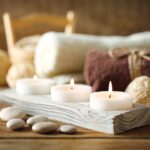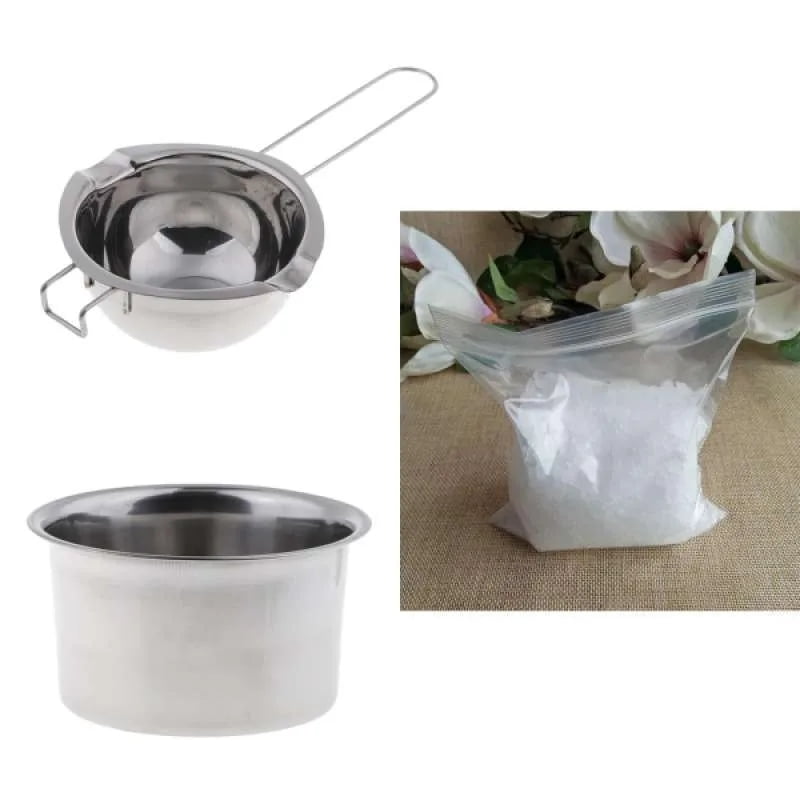Introduction to Dried Herbs For Candle Making
Dried herbs are an excellent ingredient for creating fragrant, aromatherapy candles. Not only do they make the candles smell great, but they also come with therapeutic benefits. For instance, dried lavender has been studied to help alleviate anxiety and stress while eucalyptus is great for helping one breathe better as it has anti-inflammatory benefits. There are various types of dried herbs that can be used to create beautiful and fragrant scents in your candles.
One of the most popular types of dried herbs used in candle making is lavender. Aside from its soothing properties, it’s a powerful antiseptic and can be used to ward off unwanted germs or bacteria. Rosemary is another great option for livening up your candles as it acts as a natural air freshener. It also comes with memory-enhancing benefits and can help relieve headaches and migraines if inhaled deeply enough when lit as a candle. Other popular herbs found in herbal candles include chamomile, sage, oregano, thyme, peppermint and more ” whatever fits your desired scent profile! Additionally, mixing two or more varieties of herbs can create unique blends that not only smell amazing but offer a variety of therapeutic benefits too.
When using these herbs for candle making be sure to use powdered forms so they don’t clog up the wick or melt quickly when burning the candle; this could cause safety concerns such as fire or smoke dangers. Additionally, adding colour chips into the wax prior to pouring is another way of enhancing both aesthetic beauty and pleasant scent when burning a candle made with dried herbes ” whilst taking precautionary measures to ensure the heat stability of your coloured wax chips are met too! With careful preparation you’ll find that combining these non-toxic ingredients can result into highly fragrant candles with soothing therapeutic benefits at home!
Pros and Cons of Including Dried Herbs in Candle Making
Pros:
• Dried herbs add an extra layer of scent to your candles, making them even more appealing for customers.
• Some dried herbs such as lavender have been known to have calming properties, making them perfect for creating relaxing scents.
• Additionally, some herbs also contain antibacterial, antifungal and anti-inflammatory compounds that could be beneficial when blended into natural wax formulas.
• You can experiment with combinations and find the best dried herb combination to create a unique and beautiful mix of fragrances.
Cons:
• Using the wrong herbs or ratios can cause irritation in people with sensitivities, so careful research is important before using any additives to create custom candles.
• This extra step can take up a lot of your time, as you will need to dry the herbs yourself before including them in any candle recipe.
• Also if not stored correctly, it is possible for dried herbs to lose potency over time resulting in weaker scents in your finished product.
Ways to Incorporate Dried Herbs Into Your Candle Making Process
1. Add them to your melt and pour soap base before pouring into your mold – this is a great way to incorporate herbs that are small enough to fit through the funnel, such as lavender or chamomile.
2. Layer them over the top of your melted wax – carefully spoon dried herbs over the atop of melted wax in a circular pattern before it sets. This is great for adding an extra layer of decoration, as well as medicinal benefits based on what herb you are using.
3. Infuse the melted wax with herbs during the candle making process – this will require a double boiler system or a slow cooker where you can add herbs and allow them to steep overnight before pouring the infused wax into your mold.
4. Embed them within layers of your finished candles – between each successive layer of poured wax, gently press dried herbs into place before pouring more wax on top. This is an ideal way to ensure they won’t fly away while burning and fully incorporate them with the rest of your design.
5. Fragrances made using essential oils of edible flowers or fresh/dried herbs ” combining essential oils with pre-existing fragrances can help to create unique aromas that blend well with both dried herbal elements and other ingredients in candle making recipes (ie; beeswax, etc.)
Using Essential Oils to Enhance Your Candles with Herbal Aromas
Making your own candles at home can be a cheap and easy way to bring scents from nature into your living space. You can easily find dried herbs such as lavender, rosemary, thyme, or sage that you can use when making candles to really enhance the aroma. When we used essential oils, we have an even better ability to create smells that evoke a certain mood or evoke memories of times gone by. For example, jasmine oil can be blended with sprigs of rosemary and pieces of citrus peels to create a soft and comforting ambiance in the room. Alternatively, a combination of eucalyptus, peppermint and lemon can create a stimulating scent fit for morning meditation. By adding some herbs to your wax along with essential oil you not only add pleasant aromas but also are incorporating an eco-friendly choice into your candle-making process. Botanicals like dried herbs can mingle well with other materials in wax over time giving its inhabitants more than just fragrance but also providing an overall healthful atmosphere.
Popular Herbs for Candle Making and Their Benefits
Using dried herbs for candle making is a growing trend. Herbs can be used to add a subtle and natural scent to any candle base, while also offering their own health benefits. Some of the most popular herbs for use in homemade candles are lavender, chamomile, lemon balm and rosemary.
Lavender has calming properties and helps promote relaxation when used in aromatherapy candles. The aromatic compounds derived from this plant have antidepressant and antiseptic effects, making lavender a great choice for promoting stress relief.
Chamomile is another popular herb for use in candles. While its medicinal uses have been known for centuries, it has now become even more desirable as a source of a pleasant smell in home-made candles. Not only does burning chamomile infuse a room with its sweet, mild aroma; with it bring healing properties as well such as aiding digestion and promoting sleepiness.
Lemon balm is also frequently used in scented candles due to its wonderful sweet citrusy fragrance and calming effects, which help improve mental clarity. In aromatherapy application it can reduce anxiety and stress levels which assist the user in achieving peacefulness of mind.
Rosemary is another great choice when looking to add an herbal scent to your candle wax. Its woody yet slightly minty aroma compliments many different scents – like lavender or rose – nicely while providing stimulating effects that may prove helpful in relieving exhaustion or improving mental alertness . When burnt in aromatherapy applications as part of beeswax or soy wax candles ” rosemary can create a comforting atmosphere that promotes concentration needed for tasks such as studying or working on projects
Alternatives to Dried Herbs for Candle Making
Candle making with herbs can create a beautiful scent and adds a cozy, homey atmosphere to any room. Depending on the type of herbs used and the scent desired, there are many alternatives for dried herbs in candle making. Essential oils are concentrated extracts derived from plants and often provide an intense smell; these can be combined with natural waxes for colorful, scented candles. Spices such as cinnamon, nutmeg, allspice, ginger and star anise can also contribute to a warm, spicy aroma. Flowers such as lavender, jasmine and geranium offer subtle but delightful aromas when infused into wax; dried flower petals are frequently used to decorate the surface of homemade candles. Citrus fruits such as lemons, oranges and limes make your whole house smell invigorating and come alive when blended with all-natural soy wax or beeswax. Large-grained sea salt gives off a pleasant zest that is truly unique compared to other ingredients in candles. Lastly incense resins such as sandalwood, myrrh and frankincense impart deep relaxing aromatics for mood-enhancing vibes.
Tips for Making Herbal Candles Safely
When making herbal candles, it is important to preserve their safety. To ensure that your herbal candles do not cause any danger, follow these tips:
1. Use the proper wick size for the candle’s size and wax type: Make sure to purchase a wick specifically designed for the wax you are using and size you are making.
2. Do not overheat the wax: Heat wax slowly on low or medium heat on your stove top until melted. Always use a double boiler and never place hot wax directly onto an open flame or element.
3. Monitor fragrance usage: Not all fragrances are suitable for burning, so make sure to do your research beforehand and use only reputable brands when purchasing essential oils to include in your candles.
4. Use correct temperature when applying herbs: The herbs should be added to the melt pool at 175°F and allowed to steep there for 15 minutes before adding additional ingredients, such as coloring or scent oils.
5. Measurements: For best results, be sure to measure out all aspects of your candle-making accurately, from wax needed to amounts of each herb used; this will ensure an even distribution throughout the finished product.
6. Avoid double pouring: If you’re looking for two colors in one candle ” like a red base with white drips on top ” avoid double pouring a second layer of wax over existing main color layer; this can cause unsafe melting temperatures that can ignite inside the jar while in use or create an uneven texture/burn time of each color once lit
Decorative Ideas for Dried Herbs
Using dried herbs for candle making can bring an extra element of beauty to your home or make the perfect gift for someone special. You can enhance the aroma and aesthetic appeal of your candles by incorporating different types of dried herbs into their design. Examples of herbs suitable for use in candle-making include chamomile, lavender, rosemary, thyme, oregano, sage, and mint. To get started creating unique candles with dried herbs, you can purchase pre-made kits that include everything you’ll need to make your own scented creations or build a collection from scratch. Start by adding herbs in the form of pressed flowers dredging the inside of a glass container to create colorful patterns, grinding dried petals into a powder before sprinkling them on top of candles as sparkling decorations. For more aromatherapy benefits and a rustic aesthetic add miniature bundles of herbs onto the wick itself so be sure to experiment with placement and design depending on what best suits each project. Not only will adding dried herbs provide visual interest but also imparting calming scent qualities sure to delight any sense!
Creative Uses for Dried Herbs in Candle Making
Dried herbs are an excellent addition to any homemade candle, offering both beautiful visuals and appealing aromas. Using dried herbs in candle making is a great way to add some personality to your candles”they can be used as decorations or incorporated into the wax. Dried herbs may be used as a decorative element on top of the candle, as a powder to swirl within the wax mixture, or added among layers of colored wax for beautiful displays. Some of the most popular herbs for adding fragrance to candles include lavender, rosemary, and chamomile. Cinnamon sticks make attractive ingredients when sprinkled on top of pillar candles – though not for ingestion! For added glimmer, metal shavings like copper or bronze may also be embedded in the wax around dried herbs. There are a variety of creative ways you can use dried herbs in candle making” have fun and experiment until you find an herbal scent that perfectly reflects your home and personality!
Wrapping Up
Creating aromatic herbal candles with dried herbs is a great way to get the most out of your natural candle-making ingredients. In order to get the best results in aromatherapy, candles must be made and designed carefully. There are a number of steps you can take when making herbal-infused candles that will provide lasting, therapeutic benefits.
Start by gathering together the best quality wax and dried herbs you can find; beeswax, soy or coconut wax, mugwort, lavender, juniper berries and rosemary are all good choices. Then use an electric double boiler to melt your wax before straining it over the herbs so that their aroma is released into the melted wax. Mix your choice of essential oils into the mixture until you get the desired level of aromatherapy. Finally, fill up your pre-prepared moulds with your aromatic blend before leaving them to harden for at least 6 hours. Once set, these beautiful herbal candles can provide a wonderfully calming atmosphere as well as releasing therapeutic fragrances into any room in which they are placed. In addition to this wonderful aromatherapy benefit, these handmade herbal candles also make thoughtful gifts for special occasions or even as decor pieces around your home!

Welcome to my candle making blog! In this blog, I will be sharing my tips and tricks for making candles. I will also be sharing some of my favorite recipes.





